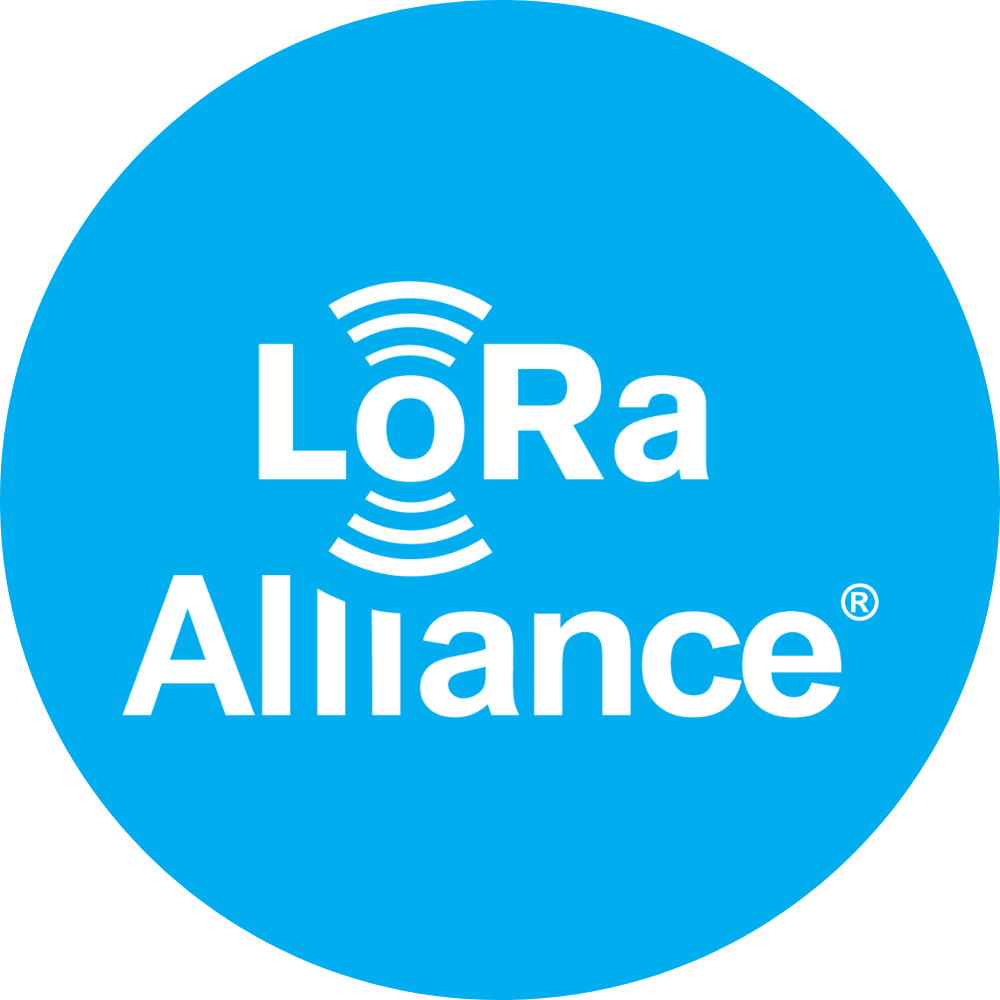What is LoRaWAN®?
In short, LoRaWAN is a wireless communication technology specifically designed for IoT applications that require long-range connectivity or communication through obstacles, all while consuming as little power as possible.
Why LoRaWAN® Stands Out
What is special about this technology that sets it apart from several other wireless technologies, such as Wi-Fi, Bluetooth, and Cellular?
Long-range / Deep indoor coverage
LoRaWAN can cover several kilometers in typical deployments, and with line of sight, gateways on LEO satellites can connect to sensors more than 600 km away.
LoRaWAN also works indoors. The long-range capability stems from its high sensitivity, which allows signals to go through multiple walls and floors when deployed indoors. That is why, for example, LoRaWAN plays a critical role in accelerating adoption of wireless networks in smart building and smart industry use cases.
This feature helps build wide and deep coverage with very low infrastructure investment.
Low power
Consumes as little power as a garage door opener (25 mW in Europe).
This feature allows devices to operate for several years on a small battery. For example, smart meters require a single charge to power the device throughout its lifetime — more than 10 years.
Low cost
LoRaWAN gateway (base station) cost is getting close to Wi-Fi access point cost — both for indoor and outdoor. Much like the other features, this is by design: gateway functionality is kept very lightweight, making them low-cost to build, easy to deploy, and easy to operate.
Unlicensed band
Using sub-GHz ISM bands, such as 868 MHz in Europe and 915 MHz in North America.
Just like Wi-Fi, deploying LoRaWAN does not require the use of any RF license. Hence, anyone can build a network — from a tech-savvy user building her own smart home solution to international public operators operating in multiple countries.
Unlike cellular technologies, which require ownership of costly and limited licenses (hence only available to a few public operators in each country), LoRaWAN is available to everyone.
While LoRaWAN has already emerged as a unique technology filling a market gap with its long-range and low-power nature, its low cost and unlicensed band usage are propelling wider adoption.
Use Cases
Today, LoRaWAN is used across all seven IoT verticals (smart utilities, industry, cities, buildings, homes, agriculture, and tracking) and all around the world — from Alaska to New Zealand. Whether you are sipping your favorite coffee at a Starbucks store in the USA, walking through the aisles of the Colosseum in Rome, watching Black Rhinos in Maasai Mara in Kenya, or working at Europe’s largest oil refinery in Rotterdam operated by Shell, you are inside a LoRaWAN network.
With more than 110 million active devices, growing 20% each year (*), LoRaWAN is being used in an unprecedented number of use cases and places — just as IoT was meant to be. The largest networks are reaching several millions of devices and already seeing 40–50% growth rates, which will only increase over time while others catch up as product-market fit keeps maturing across the ecosystem.
What LoRaWAN® is Not Designed For
Let’s also be clear about what it is not meant to do: LoRaWAN does not support the transport of large data, and it does not support real-time communication either.
By large data, we mean carrying megabytes of data per device per day, such as what a connected car or a point-of-sale device would require. LoRaWAN can carry kilobytes of data.
By real-time, we mean transporting data with millisecond latency, instead of seconds, as LoRaWAN does. Examples like controlling a drone or a robotic surgery arm are not supported by LoRaWAN.
The split between these types of use cases and the rest has a name: Critical IoT vs. Massive IoT. LoRaWAN is specifically designed for Massive IoT applications, which make up the majority of IoT market: massive number of devices, each generating small number of small-size data packets. Critical IoT applications require either wired technology or a wireless one using licensed spectrum. Such use cases are left to cellular IoT.
Powered by a Global Alliance
LoRaWAN technology is built by an open, global, non-profit industry association: the LoRa Alliance®. Founded in 2015, the Alliance is dedicated to building interoperability specifications and certification programs and promoting global adoption of the technology.
With more than 350 members (*), ranging from chip makers to global operators and hailing from all continents, it’s a true example of how collaboration can achieve great things. The LoRaWAN standard is also endorsed and published by the ITU (International Telecommunication Union).
Widest Selection of Network Types
Thanks to its long-range and highly accessible nature (open standard, open source implementations, low-cost infrastructure, unlicensed spectrum), any variety of networks can be built with LoRaWAN: public, private, and community. In fact, LoRaWAN is the only wireless technology that can be used to build all these types of networks at scale.
Not only can these networks be built and operated in isolation, but they can also be integrated with each other using a lightweight roaming feature. Several public-to-public, public-to-private, private-to-community, and private-to-private roaming agreements are set up among LoRaWAN networks today — including terrestrial and even satellite ones.
Fourth Pillar Rising
The three main pillars of the wireless communication industry have been Wi-Fi, Bluetooth, and Cellular. While Wi-Fi has been used for broadband LAN connections and Bluetooth mostly for short-range wearables and audio devices, cellular has been handling WAN broadband cases.
Long-range and low-power (so-called LPWAN) space had been left open — and that is where LoRaWAN fits in. The fourth (LPWAN) pillar has been rising with the success of LoRaWAN.
Join Us!
This article is meant to be a lightweight introduction to LoRaWAN technology. Refer to the LoRaWAN 101 webinar for a brief technical introduction, the LoRa Alliance Marketplace for member products, LoRa Alliance web site for upcoming events to meet LoRa Alliance members, published specifications, and many other resources.
I’d like to conclude by welcoming everyone to join this journey — join the LoRa Alliance — as we build the fourth, highest-load-bearing pillar for serving the widest and deepest communication market: Massive IoT.
(*) At the time of writing this article (Sep 2025).
--
Interested in becoming a guest blogger for the LoRa Alliance®? Please contact marketing@lora-alliance.com with your blog idea and draft.





